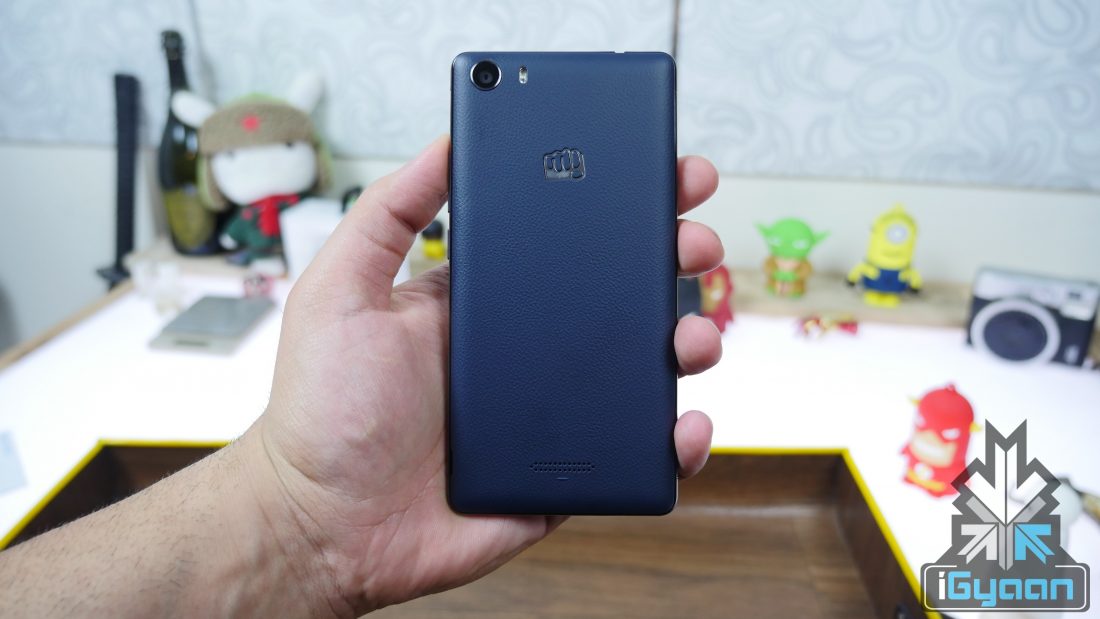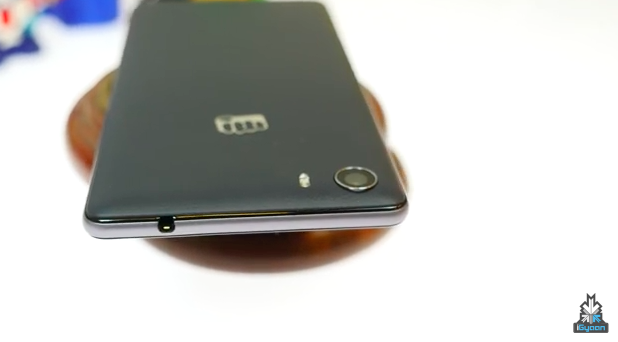Micromax Canvas 5 Review

A Budget Device that Looks Great and Performs Well
Micromax’s flagship Canvas 5 is a marked improvement from its predecessors, bumping up specs where it needed to most. The newest flagship tries to step out of Canvas 4’s shadow which saw some negativity regarding build quality and camera performance. With impressive design, performance, specs and a smooth UI for a budget device, the Canvas 5 is a solid device in the sub-Rs. 15,000 price range and gives a stiff competition to the Moto G (3rd Gen) and the OnePlus X. The Canvas 5, however, still has issues that will be familiar to long time Micromax users.
Overview

The Canvas 5 is available for Rs. 11,999 with 3 GB RAM and 8 GB internal storage, which is expandable up to 32 GB via MicroSD card slot. This year, Micromax has decided to forget about its past Canvas devices for something users will truly appreciate. Many OEMs like Micromax, Motorola and OnePlus want to prove that it is possible for a budget device to look and feel premium. The Canvas 5 seems to have found the right balance of hardware, design and build that is likely to attract consumers.
Build Quality and Design
The Canvas 5 has an impressive build and sleek design. The front sports a Gorilla Glass 3 with a 2.5D Curve Touch panel that melts along the edges, which is pleasing to the eyes and also makes the display look bigger than it actually is when switched off. The glass leaves no smudges and keeps the screen clean. All this along with a metal side and rounded edge gives the device a premium look.

In the back you have a removable plastic panel that has a faux leather texture to it. Because it’s extremely flexible, it’s not likely to break any time soon. The leather-like texture feels great in your hand and provides for a firm grip.

Hardware
Micromax has bumped up the hardware with an improved RAM and chipset. The Canvas 5 comes with 3 GB of RAM, which is handy for games, and a 1.3GHz octa core MediaTek MT6753 ARM Cortex-A53 chipset. Check out the full spec table below.
| Specification | Micromax Canvas 5 |
| Display | 5.2-inch full HD screen, Corning Gorilla Glass 3 with 2.5D Curve Touch Panel |
| Resolution | 1920×1080 pixels with 480ppi |
| Chipset | Media Tek MT6753, ARM Cortex-A53 |
| CPU | 1.3 GHz octa-core processor |
| GPU | Mali-T720 MP2 |
| RAM | 3 GB |
| Front Camera | 5 MP with flash (2560×1920) |
| Rear Camera | 13 MP AF (4160×3120) |
| Storage | 11 GB (7.5GB available) |
| Expandability | Up to 128GB via MicroSD card slot |
| Battery | 2,900 mAh battery |
| Connectivity | Wi-Fi 802.11 b/g/n, Bluetooth 4.0, GPS/AGPS, 4G LTE (LTE FDD 850MHz/1800MHz and TDD 2300MHz) |
| Operating System | Android 5.1.1 Lollipop |
| Price | Rs. 11,999 |
Performance
The device, with an octa-core 1.3 GHz processor and 3GB RAM, gives one of the smoothest performance that we have seen from any Micromax phone. The hardware allows you to multi-task with greater ease and also improves gaming performance, though the device starts to heat up when the cores start kicking in.
Swiping through the phone is snappy and fluid and you will love the ease of it all within 5 minutes of usage. The phone will respond quickly to all your basic day-to-day needs and with no app drawer, you can access your apps a lot faster, though . Talking about the apps, the Canvas 5 has a lot of bloatware like SwiftKey, Quikr and Snapdeal, all of which can be uninstalled this time around.
Games like Marvel’s Contest of Champions and Asphalt 8 work smoothly without and lags. However, playing for long periods at a stretch will heat up the smartphone.
Benchmark
The phone scored over 32000 on AnTuTu Benchmark and has been found to be 95% better than devices in the range, while it scores a 4931 on AndEBench Benchmark. We compared the Canvas 5’s results with that of the slightly higher OnePlus X, Yu Yureka and Moto G (3rd Gen) and this is what we found.
| Benchmark | Micromax Canvas 5 | OnePlus X | Yu Yureka | Moto G (3rd Gen) |
| AnTuTu | 32801 | 41899 | 24258 | 23383 |
| Vellamo (single core) | 1061 | 1583 | 1038 | 1248 |
| Vellamo (multicore) | 1524 | 1445 | 1530 | 1243 |
| AndEBench | 4931 | 7623 | 4807 | 4160 |
As you can see, the Micromax Canvas 5 scores better than the Yu Yureka and the Moto G (3rd Gen), and also performs better than the OnePlus X in the multicore test.
Camera and Multimedia
The Canvas 5 actually has a great camera app with loads of modes and pro features like those found on flagship Samsung Galaxy phones. You also get an app that lets you retouch images and give the desired makeup that it needs.

The device features a 13MP rear camera and a 5MP front with flash. The images taken by the primary camera are fairly decent and is quick at capturing images. The added professional modes like ISO, exposure compensations and white balance help you take that perfect shot. So, for a mid-range device, the Canvas 5 gives you a lot to play around with.

The primary camera holds well under low light conditions and comes with standard Face Beauty and Smile Shutter features as well as Picture-in-Picture. The display of the device is a 1920x1080p panel with 480ppi which gives bright and vivid colours. So much so that it makes you want to switch on the phone even if you have nothing in particular to do. Outdoor visibility is decent, however, reflections on the screen can make it hard to see at certain angles.
Phone Network and Battery
The Canvas 5 joins the list of 4G network-ready Android phones this year along with the Moto G (Gen 3) and the OnePlus X.
A 2,900mAh battery lets you use the device for a whole day. Heavy usage will let the Canvas 5 serve you till the evening before requiring another round of charging. Charging the Canvas 5 takes a while, and if you happen to use a different cable for charging, you’ll get a notification telling you the charging is slow asking you to use an original charger.

Some neat features like ‘Smart Awake’ lets you access some apps like music player and camera without having to switch on your device. Simply make a pattern of C on the screen when on standby mode and the camera app will open. Similarly, drawing M will open up the music player. This is a neat way to save some juice.
The Canvas 5 gives up to 9 hours of talktime (3G) and around 6-7 hours of internet surfing on a single charge.
- Talk Time : 9 hours
- Standby : 275 hours
- Internet : 7 hours
- Music : 9 hours
- Gaming : 2.5 hours
Conclusion
The Canvas 5 has a lot going for it and a lot that needs improvements still. A superb design and build quality along with great display and good performance makes this device worth every penny. Few things that could hold the device back, though, are the bloatware, the occasional heating issues, and most importantly, the poor after-sales service. The Canvas 5 is a pretty solid smartphone in its range and should definitely be an option if you’re in the market for budget devices.
























 ! For i
! For i